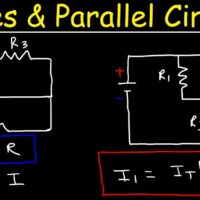A multimeter is a device used to measure multiple parameters in an electric circuit, such as voltage, current, and resistance, with high accuracy and speed. It consists of a digital or analog meter, batteries, resistors, and other circuitry.
Its main function is to troubleshoot a wide range of electrical components and to test wires, power cords, and batteries to see if they are working properly. Additionally, it can be used to determine if a particular circuit is open or has continuity.
A multimeter is an invaluable tool for electrical workers, and this article will explore in detail how to use a multimeter effectively, its types, components, and various functions.

Credit: www.youtube.com
Understanding Multimeter Function
A multimeter is a device used to measure various electrical parameters of a circuit such as voltage, current and resistance. It is a valuable tool for troubleshooting electrical components and is often used to test wires, power cords, batteries, and outlets for power.
Understanding Multimeter Function A multimeter is an essential tool for anyone working with electrical circuits. It can measure voltage, current, resistance, and other variables of an electric circuit, providing accurate results with high precision. In this section, we will understand the main function of a multimeter, different functions on a multimeter, and the reasons for using a multimeter.
The Main Function Of A Multimeter
The main function of a multimeter is to measure electrical quantities in a circuit. It does so by using digital or analog meters, batteries, resistors, and other circuitry. By measuring voltage, current, resistance, continuity, capacitance, frequency, and other variables, a multimeter tells you whether a particular circuit is functioning correctly or not.
Different Functions On A Multimeter
A multimeter comes with different functions that allow you to measure various electrical quantities. The most common functions of a multimeter include:
- Low Impedance Voltage
- Volts AC/DC
- Capacitance
- Frequency & Duty Cycle
- Milliamps Current
- Non-contact voltage detector
Whether you are an engineer, technician, or hobbyist, understanding the functions of a multimeter can help you troubleshoot electrical issues.
Reasons For Using A Multimeter
There are numerous reasons for using a multimeter. Some of the most common reasons include:
- Testing wires, power cords, and batteries for proper functionality
- Detecting voltage and current presence in outlets and circuits
- Measuring resistance levels and tracing continuity
- Identifying faulty components and repairing them accordingly
- Monitoring electrical systems to ensure they are performing optimally
In conclusion, a multimeter is an important tool for anyone dealing with electrical circuits, providing accurate and efficient measurements of various electrical quantities. Understanding the main function of a multimeter, its different functions, and reasons for using it is essential to make the most of this versatile tool.

Credit: www.tatteredcover.com
Types Of Multimeter
A multimeter is used to measure various electrical parameters of a circuit such as voltage, current, and resistance. There are different types of multimeters available, including digital and analog meters, with various functions like low impedance voltage, capacitance, and non-contact voltage detectors.
They can be used in troubleshooting a range of electrical components and determining if circuits are open or have continuity.
ltimeter do and what are its types? A multimeter is a versatile tool that can be used to test and measure various electrical parameters. There are mainly two types of multimeters: digital multimeter and analog multimeter. Let’s take a closer look at each type and their respective functions.
Digital Multimeter
A digital multimeter (DMM) is a modern type of multimeter that uses digital signals to display measured values. It has a digital display and can measure a wide range of electrical parameters, including voltage (AC/DC), current, resistance, diodes, and continuity. Digital multimeters are user-friendly and offer a high degree of accuracy and precision. They also have additional features like data logging, auto-ranging, and auto-power off.
Analog Multimeter
An analog multimeter, also known as a VOM (Volt-Ohm-Milliammeter), is a traditional type of multimeter that uses analog signals to display the measured values through a pointer and dial. It can measure voltage (AC/DC), current, and resistance. Analog multimeters are easy to use but require some skill to interpret the readings accurately. They also tend to have lower accuracy compared to digital multimeters. In conclusion, a multimeter is a handy tool for any electrician or DIY enthusiast who wants to troubleshoot electrical systems and components. Whether it is a digital or analog multimeter, it can help you measure and test various electrical parameters with accuracy and precision.
Components Of A Multimeter
A multimeter is a commonly used device in the field of electrical engineering to measure various electrical quantities. It is made up of several components that work together to provide accurate measurements. Here are the main components of a multimeter:
Digital Or Analog Meter
The most visible part of the multimeter is the meter itself. The meter can be either digital or analog. The digital meter displays the readings in numerical form, while the analog meter displays the readings using a moving pointer.
Batteries
Batteries are used in a multimeter to power the device. They are usually located inside the multimeter and can be easily replaced when drained. It is important to note that a weak battery can affect the accuracy of the multimeter readings.
Resistors
Resistors are used in a multimeter to limit the flow of current to the meter. These resistors help to protect the meter from damage due to overvoltage or incorrect selection of the measurement range.
Other Circuitry
Several other circuitry components, such as diodes and capacitors, are used in a multimeter to ensure accurate readings. These components help filter out any unwanted signals and noise that can affect the measurement accuracy.
A multimeter is a valuable tool for anyone working on electrical equipment. Understanding the components of a multimeter can help you make informed decisions when selecting the right multimeter for your needs and ensure accurate measurements.
How To Use A Multimeter
A multimeter is a device used to measure voltage, current, and resistance in an electrical circuit with high accuracy and speed. Its main function is to troubleshoot various electrical components and test power cords, batteries and outlets. Using a multimeter can help in determining if a circuit is open or has continuity.
Introduction To Multimeter Anatomy
A multimeter is a vital tool for any electrician or electrical enthusiast. It is a device that measures various electrical parameters such as volts, ohms, and amps. Its anatomy includes a display screen, measurement dials, input jacks, and test leads. Understanding the different parts of a multimeter and how they function is crucial to using it effectively.
Safety Warning
Before using a multimeter, it’s essential to take the necessary safety precautions. Working with electricity can be dangerous, and using a multimeter incorrectly can damage the device or cause injury. Always ensure that the multimeter is rated for the voltage you’re testing. Keep your fingers behind the safety screens while testing, and avoid touching any bare wires or conductors.
Continuity
The continuity function on a multimeter is used to check if a circuit is complete or not. When testing for continuity, the multimeter will sound an audible beep if the circuit is complete. To check for continuity, turn the multimeter to the continuity mode, touch the test leads together, and listen for the beep. Then, touch the test leads to the circuit or component being tested.
Resistance
The resistance function on a multimeter is used to measure the resistance of a circuit or component. Resistance is measured in ohms and can be used to check for damaged or faulty components. To measure resistance, set the multimeter to the ohms mode and touch the test leads to the circuit or component being tested.
Voltage
The voltage function on a multimeter is used to measure the voltage of a circuit or component. Voltage is measured in volts and can be used to check for voltage drops or incorrect voltage levels. To measure voltage, set the multimeter to the volts mode, touch the test leads to the circuit or component being tested.
Current
The current function on a multimeter is used to measure the current flowing through a circuit or component. Current is measured in amps and can be used to check for overloading or short circuits. To measure current, set the multimeter to the amps mode, and place the test leads in series with the circuit or component being tested.
Practice Exercises
To become comfortable using a multimeter, practice exercises can help. Follow these exercises to master using a multimeter:
- Test a battery to check its voltage
- Test a light switch for continuity
- Test a resistor to check its value
- Check for voltage drop across a diode
In conclusion, a multimeter is a versatile tool for measuring electrical parameters. Understanding how to use a multimeter is crucial for anyone working with electrical components. Always take necessary safety precautions and practice using the device regularly.
Designs Of Multimeter
A multimeter is a device used to measure various electrical parameters in a circuit such as voltage, current, and resistance. The device comprises a digital or analog meter, batteries, resistors, and other circuitry to ensure accurate and speedy measurement of electrical quantities.
Multimeter designs include safety screens and features like tolerance, and it is an invaluable tool for troubleshooting several electrical components.
Electronic Multimeter
When it comes to the designs of a multimeter, the electronic multimeter is a popular choice. This type of multimeter uses an LCD screen to display readings digitally. It offers a range of functions and can measure multiple parameters like voltage, current, resistance, capacitance, and frequency. Electronic multimeters are compact, lightweight, and easy to use. They usually come with a dial or button to select different functions and ranges. One of the advantages of electronic multimeters is that they can measure even small fluctuations accurately. These multimeters require batteries to operate and offer auto-ranging or manual ranging options depending on the model.
Gardner Bender Digital Multimeter
The Gardner Bender Digital Multimeter is another type of multimeter used by many electricians and hobbyists. This multimeter has a rugged design and can withstand harsh environments. It offers several features like auto-ranging, data hold, and a backlit display for easy readings in low light conditions. The Gardner Bender Digital Multimeter also comes with test leads and a protective holster for added safety and convenience. It can measure voltage, current, resistance, capacitance, and temperature. This multimeter is easy to use and provides accurate readings for troubleshooting electrical circuits.
Kobalt Analog Multimeter
The Kobalt Analog Multimeter is an analog tool that uses a needle to display readings on a scale. This type of multimeter has been around for decades and is still popular among some professionals and enthusiasts. The Kobalt Analog Multimeter is durable and simple to use. It can measure voltage, current, and resistance. Analog multimeters are known for their ability to capture fast-changing signals that digital multimeters might miss. The Kobalt Analog Multimeter is ideal for those who prefer a traditional style tool for measuring electrical circuits. In conclusion, the designs of multimeters vary depending on the manufacturer and the intended use. Electronic multimeters are the most common type and offer a range of functions and features. The Gardner Bender Digital Multimeter is a rugged and reliable tool for professionals, while the Kobalt Analog Multimeter is a traditional and straightforward option for hobbyists. Whatever type of multimeter you choose, it is an essential tool for anyone working with electrical circuits.

Credit: www.amazon.com
Functions Of A Multimeter
A multimeter is a device used to measure multiple parameters of an electric circuit such as voltage, current, and resistance. The digital or analog meter, batteries, resistors, and other circuitry ensure measurement of several electrical quantities with very high accuracy and speed.
If you’re an electrician, a multimeter is an invaluable tool used to measure various electrical parameters, including voltage, current, and resistance. It’s made up of a digital or analog meter, batteries, and other circuitry that enable to measure electrical quantities with very high accuracy and speed. In this article, we’ll focus on the functions of a multimeter that make it such a versatile and essential tool to have in your toolkit.
Dc Voltage
One of the most commonly used functions of a multimeter is measuring DC voltage. The multimeter is connected in parallel with the circuit and measures the voltage being produced by the battery or power supply. This function is useful in determining whether a battery is charged or needs to be replaced. Using this function, you can also measure the DC voltage of a wall outlet or any other DC voltage source.
Ac Voltage
AC voltage is the voltage that’s produced by an alternating current power source, and the multimeter can also measure it. The multimeter measures the voltage produced by the AC power source, which is commonly used in homes and offices. This function is crucial in troubleshooting electrical systems and ensuring safe electrical connections.
Safety Screen
Multimeters come equipped with a safety screen, which keeps the user safe from electric shock while working on live circuits. It’s important to follow safety guidelines and use the safety screen when working with a multimeter.
Tolerance
Tolerance is another essential function of a multimeter, and it refers to the degree of measurement error that’s acceptable. The tolerance of a multimeter is usually expressed as a percentage of the actual reading. This feature ensures that the multimeter provides accurate measurement results.
Frequency
Frequency is also a critical function of a multimeter, which measures the frequency of an AC voltage. It’s measured in Hertz and is used mainly in electronics and power engineering. By measuring the frequency, the user can determine whether components are working correctly.
Capacitors
The capacitance function on a multimeter measures the capacitance of electronic components, such as capacitors. Using this function, the user can determine the capacitance of a capacitor and whether it’s functioning correctly.
Transistor Test Area
Another function of a multimeter is the transistor test area, used to test and measure the characteristics of a transistor. Using this feature, the user can determine whether the transistor is operational or needs to be replaced.
Battery Test
Finally, the battery testing function on a multimeter measures the voltage produced by a battery. This function is useful in determining whether the battery is still functional and needs to be replaced. In conclusion, a multimeter is an indispensable tool in any electrician’s toolkit. These functions enable them to measure various electrical parameters with high accuracy and speed. Whether you’re working on a residential or commercial electrical system, a multimeter is an essential tool that can help you troubleshoot and maintain electrical components.
Frequently Asked Questions Of Multimeter Function
What Is The Main Function Of A Multimeter?
A multimeter is a device that measures electrical parameters like voltage, current, and resistance in an electric circuit. It consists of a digital or analog meter, batteries, resistors, and other circuitry to ensure high accuracy and speed in measuring electrical quantities.
Multimeters are invaluable tools for troubleshooting and testing wires, power cords, batteries, and outlets.
What Is The Use Of Multimeter Function?
A multimeter is a device that measures multiple electric circuit parameters such as voltage, current and resistance. It is an invaluable tool for troubleshooting electrical components and testing wires, power cords, batteries and outlets. It can also determine if a circuit is open or has continuity.
What Is The Reason For Using Multimeter?
The reason for using a multimeter is to measure voltage, current, resistance, and continuity in a circuit. It is an essential tool for troubleshooting electrical components, testing wires, power cords, batteries, and outlets. Multimeters can capture electrical readings with high accuracy and speed, making it an invaluable tool for electrical workers and hobbyists.
What Does Multimeter Read?
A multimeter reads or measures different electrical parameters like alternating current (AC) voltage, direct current (DC) voltage, resistance, and amperage. It is an essential tool for troubleshooting different electrical components, including wires, power cords, and batteries, to check if they are working properly.
A multimeter can also test outlets for power and determine if a circuit is open or has continuity.
Conclusion
The multimeter is an essential tool for anyone dealing with electrical components. With its ability to measure various parameters like voltage, current, and resistance, it helps in troubleshooting and repairing several electrical devices. It is also a handy tool for testing batteries, power cords, and outlets.
By understanding the different functions of a multimeter, such as capacitance, frequency, and voltage, users can easily perform electrical tests with high accuracy and speed. So, go ahead and learn how to use a multimeter like a pro!




